The Walt Disney Company is one of the most popular companies that offers entertainment in the form of theme parks, shows, series, merchandise, and movies to its customers of different ages. The company was founded in the 1920s as a cartoon and animation studio, and, after that, it experienced an expansion. Nowadays, it has a worldwide recognition and operates under the symbol DIS in the capital markets. It could be said that its ability to cover different areas of operations, excellence in customer services, outstanding financial performance, and leadership are the main reasons for selecting this company for the financial analysis and its positive brand image worldwide.
To assess the company’s current position in the market, its financial performance in the form of ratios and trends is compared with the company’s close competitors, Six Flags Entertainment Corporation (SIX). Consequently, the primary goal of the paper is to compute financial ratios, analyze tendencies, compare operations of DIS to SIX (taken as industry standards), conduct SWOT and ethics analysis, and depict the main decisions and conclusions. To assess the firm’s performance, information was gathered from Yahoo Finance, MSI Finance, and MorningStar. These websites were selected, as they have the most profound and easy-to-use information about financial services. Excel template was utilized to enter and compose the required calculations. After that, it was imported into the Word document to conduct the sufficient analysis of trends and financial performance of DIS.
Calculations of Financial Ratios
In the first place, to evaluate the company’s financial performance, it is critical to compute financial data. Different types of ratios were used to assess company’s financial performance and compare it to the competitors in the subsequent sections. In this case, Table 1 presents the calculations of all ratios for conducting the analysis for DIS.
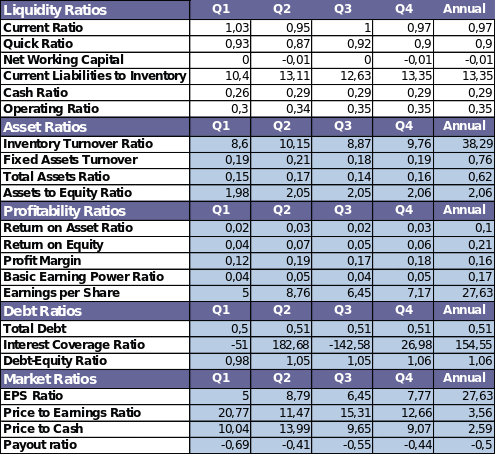
Analysis of Financial Trends
As it was mentioned earlier, the computations depicted in Table 1 help depict the most common tendencies that reflect company’s development and operations.
Liquidity Ratios
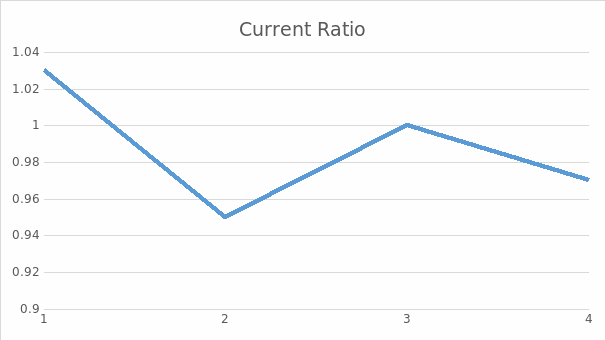
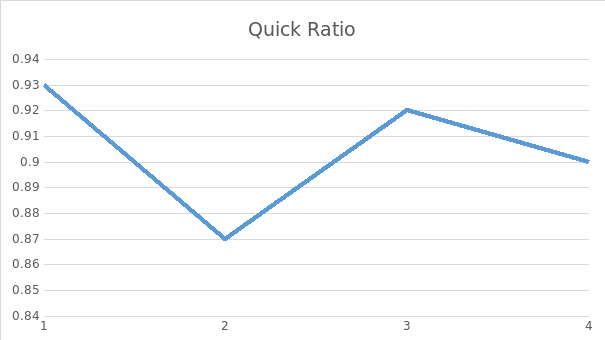
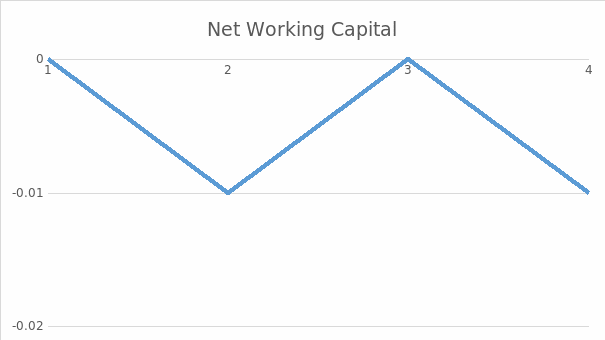
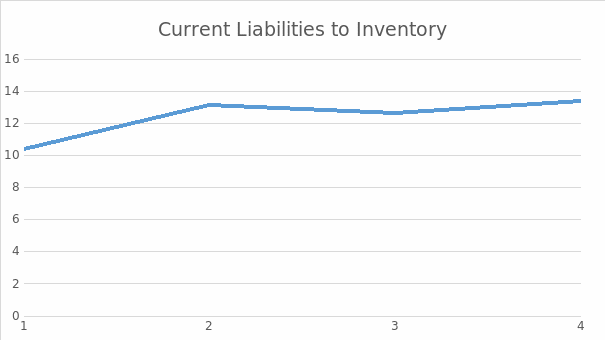
Figure 1 displays that current ratio is stable, but it may experience minor downward changes due to continuous fluctuations in the value of liabilities. In turn, Figure 2 shows that quick ratio is also constant. The slight differences in its values may pertain to the rise of prices of inventories and negative changes in the value of current liabilities. Furthermore, Figure 3 opines that net working capital ratio experiences an adverse tendency. For instance, its value was 0.1 in Q1 and Q3, and these changes can pertain to the shift in current liabilities while questioning the ability of the company to pay short-term debt. In turn, Figure 4 states that the current liabilities to inventory ratio experiences a positive movement due to a substantial increase in the liabilities used for expansion. The company has to pay vehement attention to these aspects, as, otherwise, it will not be able to pay short and long-term debts. Both operating and cash ratios experience upward trends (Figure 5 and Figure 6). In the case of the cash ratio, it is positive, as it implies that company’s cash inflows continue to increase. As for operating ratio, its slight rising tendency can be regarded as negative, as the company has to aim toward decreasing its operational expenses.
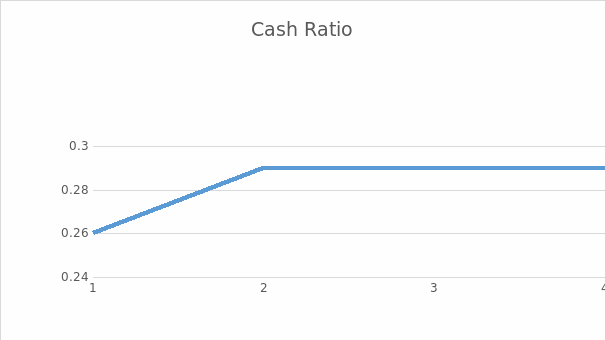
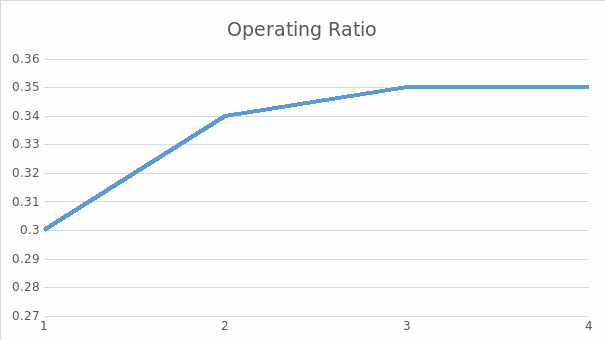
Asset Ratios
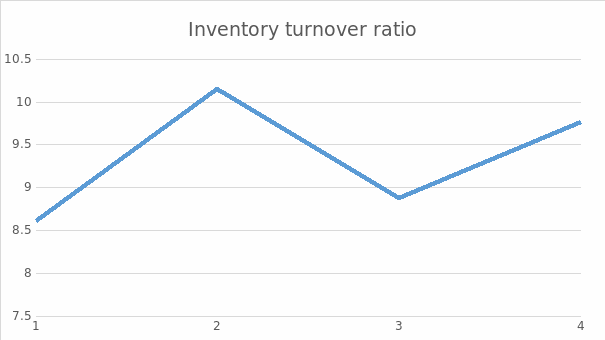
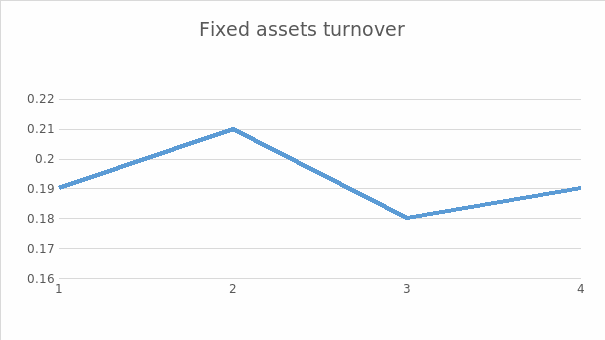
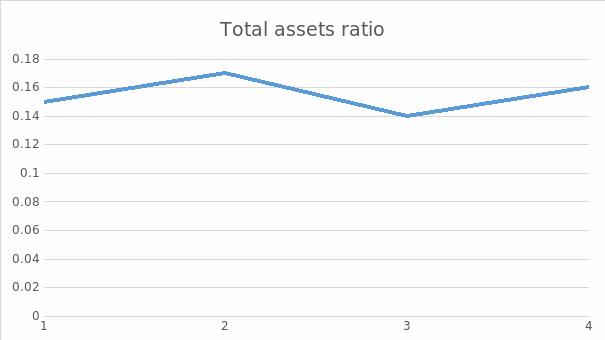
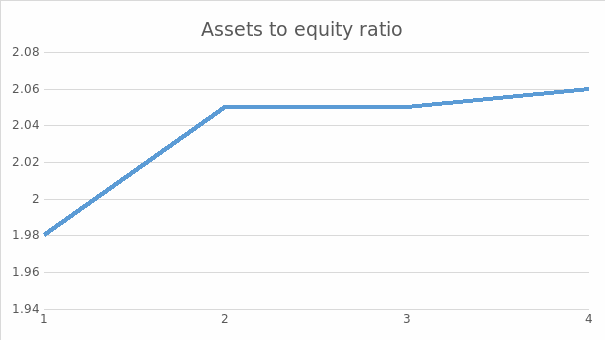
As for the asset ratios of the company, Figures 7, 8, 9 tend to portray similar tendencies. In this case, the upward shift in all graphs implies that the company has a stable number of assets while its revenues continue to increase. Speaking of the asset to equity ratio, it also experiences a slight upward shift, and it pertains to the fact that the company is stable in issuing its common shares. In this case, DIS should focus on increasing its recognition and attracting additional shareholders. Overall, its stability occurs due to the fact that the company has a steady income from different spheres, and these matters increase the company’s revenues while ensuring its profitability.
Profitability Ratios
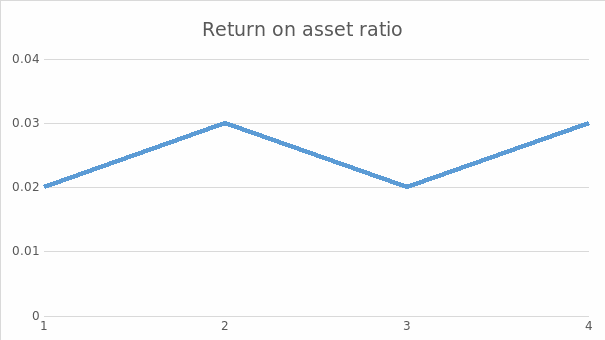
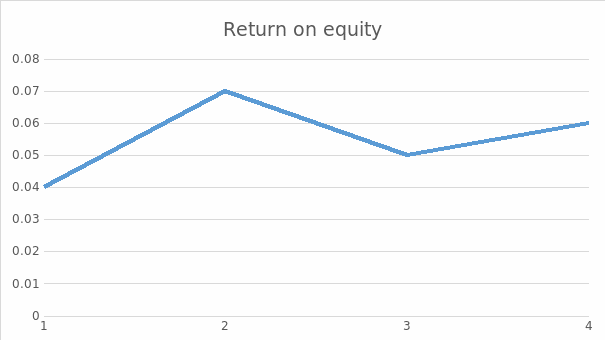
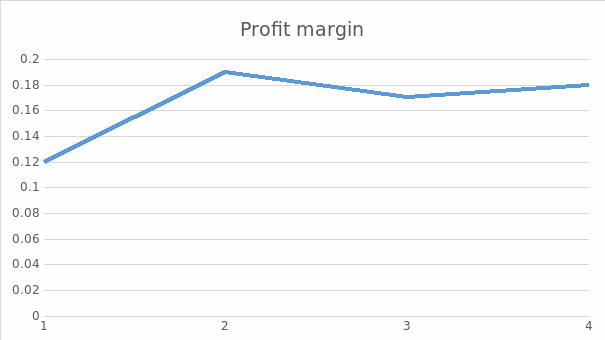
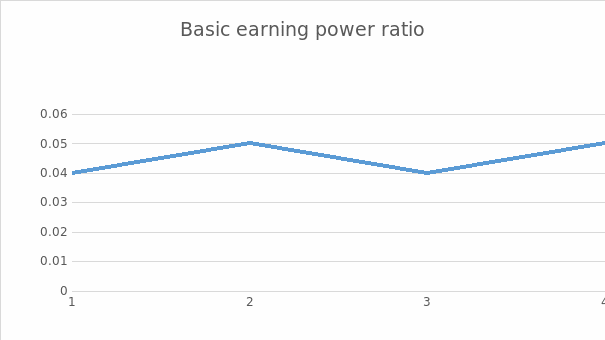
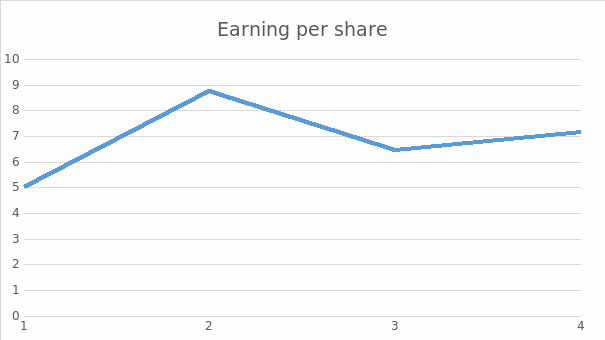
As for the profitability ratios, Figures 11-15 show stability. All graphs show a similar pattern with peaks of its revenues in Q2 and Q4. Meanwhile, the low values in Q1 and Q3 have a direct correlation with the seasonality of the business. During Christmas season and summer, a substantial amount of revenue is acquired from the theme parks, and it explains high profitability of the business during Q2 and Q4. Simultaneously, this trend underlines that the firm takes advantage of this trend and prepares the parks for the seasonal changes.
Debt Ratios
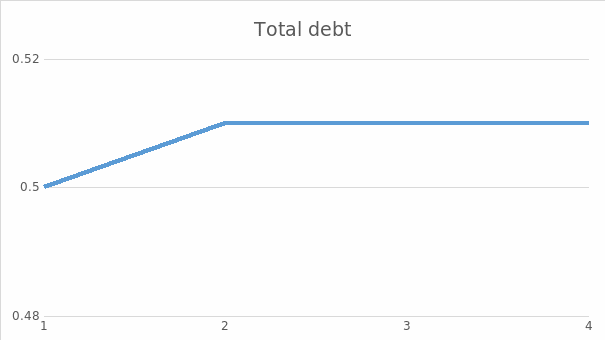
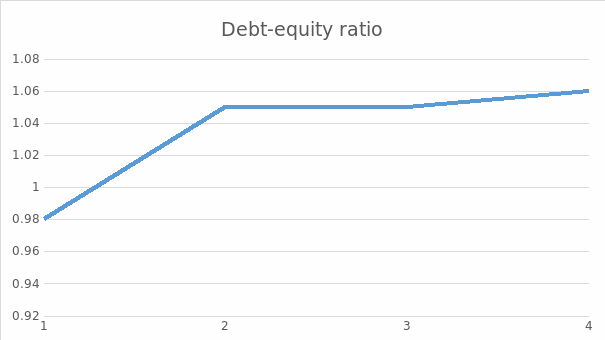
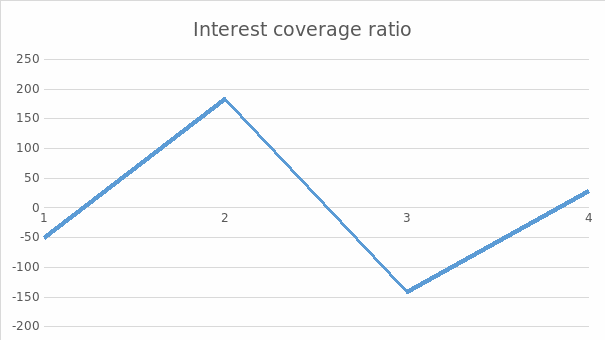
Figures 15 and 16 depict a similar tendency, as both graphs indicate that the lines continue to experience an upward shift. It refers to the fact that the liabilities are increasing in their value as DIS continues to expand its operations. In this instance, the company has to pay attention to this aspect since it may lead to the loss of the revenues and decrease its overall profitability. Furthermore, the graph in Figure 17 has similarities with the tendencies depicted in the profitability ratios. Its high dependence on the total amount of revenues and earnings before interest and tax indicate that the value of this ratio has a connection with the seasonality of the business. Consequently, DIS has to continue working on increasing its revenues during Q1 and Q3 to enhance its overall profitability.
Market Ratios
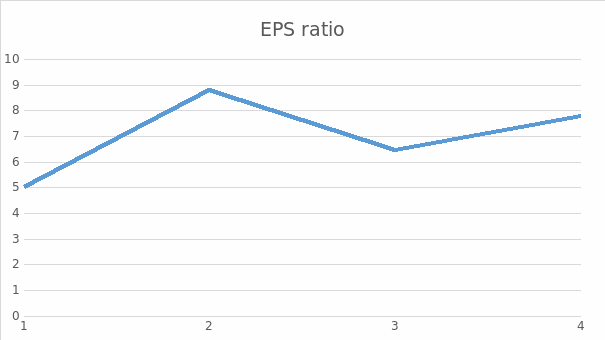
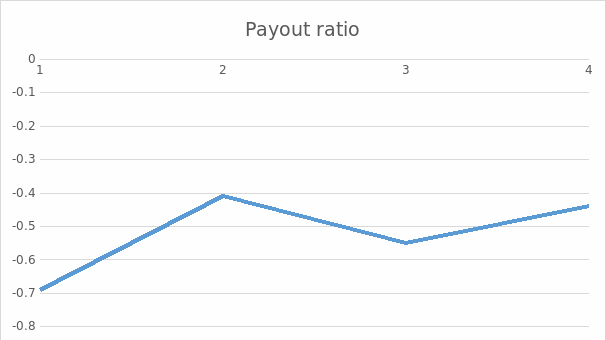
As it was mentioned in previous sections, the revenues of DIS are dependent on the seasons while summer and winter are more attractive to the customers due to the changes in the outlook of the parks (Q2 and Q4) (see Figure 18 and 19). In this case, payout and earnings per share also portray this connection. Consequently, it is logical that return on share and the ability of the company to pay back in dividends raise during the seasons attractive for tourists. Figure 20 displays that price to earnings ratio is relatively stable. However, there is a direct connection with EPS ratio. Due to the connection of EPS to the seasonality, the price of earning ratio will increase if EPS decreases and vice versa. Consequently, the price per share in the capital markets will continue to rise while taking into account the fluctuations of EPS curve and changes in the business environment. Lastly, the price to cash flow ratio shows a dramatic increase in Q2 while being significantly lower in other quarters (see Figure 20). It may signify that the economic situation with Disney will continue to worsen while leading to the financial loss, and the company has to monitor its actions in the in capital markets carefully.
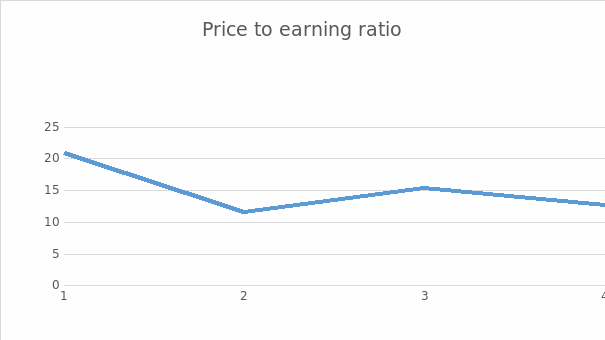
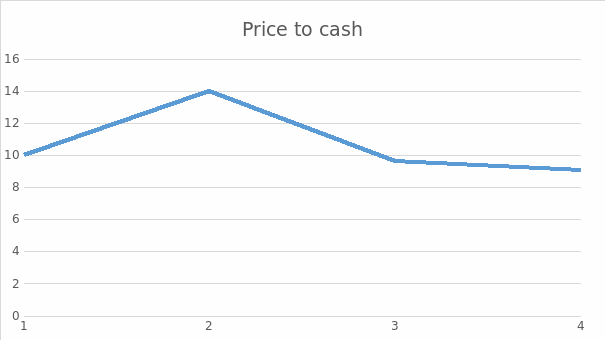
Comparison of the Company to the Industry Performance
Despite the clarity of the ratio analysis and graphical representation of the main trends, it is critical to compare DIS operations with the financial performance of its major competitors, Six Flags Entertainment (SIX). One of the main similarities is the seasonality of the business, and it is depicted by the rising popularity of the businesses in Q2 and Q4. With the help of Table 2, it is possible to see that SIX has better performance (current, quick, return on equity, and EPS ones). It seems that the company has higher solvency and liquidity measurements. Nonetheless, higher values in the indicated spheres pertain to the lower liabilities, fewer common shares, and low payout of dividends. These features make SIX beneficial for lenders while not attractive to new shareholders. A combination of these factors explains a low number of the common shares and a decreasing price per share. On the contrary, DIS cherishes the relationships with its shareholders, and it is portrayed by a high debt-to-equity ratio and rising prices of common shares in the capital markets. Simultaneously, Table 2 indicates that despite an increase in liabilities, the company focuses on its long-term debt while using the loans for the expansion of its services. These factors assist Disney in having high profit margins, as they not only increase the sources of revenues but also have a tendency to decrease its costs (operational expenses). Overall, a combination of these factors explains Disney’s leadership in the market, as it is able to consider all the components mentioned above at the same time.
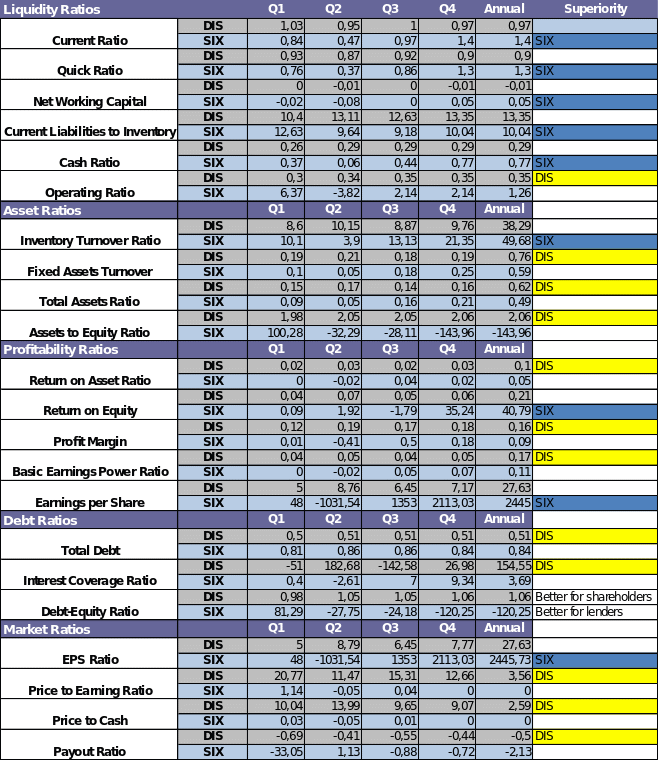
SWOT Analysis for the Company
Strengths and Weaknesses
With the help of the analyses portrayed above, it is possible to identify the following strengths as the bullet points:
- The comparison revealed DIS’ outstanding financial performance;
- Its long-term orientation helps DIS to distribute resources effectively and contributes to efficient budgeting and planning;
- Simultaneously, due to the fact that company operates in the market for many years, it has a high recognition worldwide while being one of the favorite places to visit for vacation;
- It remains apparent that DIS has an extended geographical coverage and many product lines that increase its recognition and profitability at the same time;
- Lastly, the company has a well-developed corporate culture that helps build trusting relationships with the employees.
Nonetheless, despite a substantial number of benefits, the firm tends to have some weaknesses, and they are:
- The analysis portrays that the company has high liabilities. Their continuous shift may have a negative effect on the firm’s financial prosperity and revenues;
- A high diversity of businesses and spheres that DIS operates in creates difficulties for management and monitoring and control of the activities.
Opportunities and Threats
Due to the continuous development of the world, the main opportunities are:
- The rising popularity of DIS’ parks and the entertainment segment, creates opportunities for the company to expand nationally and internationally;
- The company can take advantage of social media and interact with the consumers in the online brand groups by organizing competitions and giving discounts to the members.
As for threats, they are:
- The competition in the entertainment segment continues to rise, and there are more and more theme parks that are opened worldwide. For example, Wanda is one of the most popular locations in China and can be viewed as the major competitor in this geographical area;
- The inability to respond to the changes in technology will lead to loss of the market share and worldwide due to the seasonality of the parks.
Ethics of the Company
Apart from financial prosperity, the company has to pay vehement attention to its relationships with shareholders, customers, and employees. To avoid misunderstandings, DIS has a well-defined code of ethics and business and standards. The CEO and the Board of Directors understand the significance of this matter. To avoid confusion, sufficient training is offered to its potential employees while ensuring equal opportunities for everyone to be hired. Simultaneously, both employees and customers can report the cases of discrimination to the management. It is possible to implement since the company has a well-developed reporting system and prevention policies that can help avoid similar issues in future. The desire of DIS to invest in its employees and support their development and well-designed corporate culture make the company one of the most attractive locations for the potential employees.
Conclusions and Decisions
Would You Place a Personal Deposit of One Million Dollars or More in The Publicly Traded Stock of This Company?
Based on the analysis conducted above, this decision is beneficial. The shares of DIS will continue to increase while the company focuses on the optimization (low operating ratio) of its performance and expansion (high liabilities). Meanwhile, its payout ratio and debt-to-equity are also higher that the industry average while the company cares about its shareholders. These factors underline that it is favorable to make a $1,000 long-term investment in the publicly traded stock of DIS.
Would You Invest $500,000 in the Debt (Bonds) of This Company?
The analysis reveals that the company’s debt ratios comply with or better than the industry standards. For instance, the annual debt ratio accounts only for 0.51 while interest coverage ratio also pertains superior. At the same time, the firm continues its expansion while increasing its revenues and reducing operational costs. The market also offers favorable opportunities for DIS, as taking advantages of social media will increase its attractiveness to the customers. Overall, these matters signal that the company is suitable for the bonding investment.
If You Were a Member of the Board of Directors of a Bank and You Sat on That Bank’s Credit Committee, Would You Grant a One Million Dollar Line of Credit for Overnight or Term Federal Funds to This Company?
In turn, the analysis indicates that the company has a tendency to repay its debts on time (low debt ratio). Nonetheless, its higher value of debt-to-equity ratio than the industry average may question the appropriateness of this decision to invest. However, its stability in operational ratio and rising profitability indicators signal that the company will be able to return a short-term debt on time.
Conclusion
Overall, a combination of these analyses helps reveal that it is necessary to conduct the evaluation when comparing DIS with the industry averages. Disney Company has a worldwide recognition and outstanding financial performance. Nonetheless, when comparing it with the ratios of Six Flags Entertainment, it was revealed that the firm had lower liquidity and solvency than the industry average. The company has to focus on these in the recent future. Meanwhile, performance in other spheres is superior, and this fact makes the firm attractive to shareholders and investors.
References
Bloomberg. (2016). Disney vs. Wanda: How the two theme parks stuck up. Bloomberg News. Web.
Ehrhardt, M., & Brigham, E. (2016). Corporate finance: A focused approach. San Francisco, CA: Cengage Learning.
Evans, D. (2012). Social media marketing: An hour a day. Hoboken, NJ: John Wiley & Sons.
Lomas, M. (2016). A pocket guide in investing in positive cash flow property. Hoboken, NJ: John Wiley & Sons.
Morningstar: Walt Disney Co. (2016). Web.
MSN: Money: Walt Disney Co. (2016). Web.
The Walt Disney Co.: Income Statement. (2016). Web.
The Walt Disney Company: About. (2016). Web.
The Walt Disney Company: Ethics and business standards. (2016). Web.